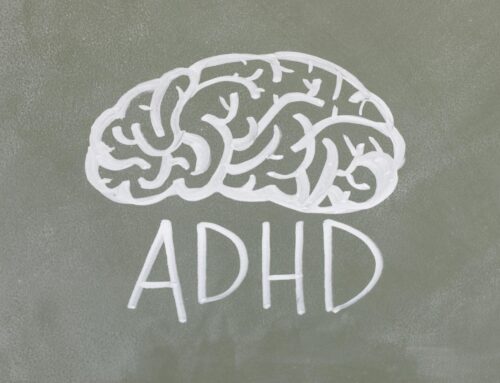*If you suspect your child is self-injuring please seek immediate professional help. The following article is intended provide education and information and is not an appropriate substitute for therapy*
Cheryl, a bright 16-year-old girl, just got back her math test. An overachiever by nature, Cheryl was demoralized to learn she had received a C+. With no option for a retake, Cheryl became hopeless, quickly spiraling down a slope of a catastrophizing. “I won’t get into college, I won’t get a job, I won’t be happy” she worried. As if her day could not get any worse, Cheryl noticed later at lunch that her best friend was sitting with a new group of peers. Pouring salt in the wound, her best friend hardly even glanced at Cheryl when she walked by her. When Cheryl got home from school, she stormed off to her room before her concerned mother could even ask what was wrong. Later at dinner, Cheryl joined her family, now seemingly more upbeat and back to her regular self. However, Cheryl’s mother could not help but notice three small specs of blood on the cuff Cheryl’s hoodie.
Sadly, this is a scene that plays out at the home of many teenagers across the country. Cheryl, for reasons that few adults in her life can understand, uses self-injury (i.e., cutting) as a way to regulate her emotions and restore her psychological equilibrium. Whether it be cutting, scratching, or burning, non-suicidal self-injurious behavior (NSSIB) is one of the most perplexing and frightening behaviors a parent can encounter. The goal of this article is to decode this bewildering phenomenon and guide parents on what to do if they discover their teen is self-injuring. There are many reasons why teens engaging in cutting. In a nutshell, cutting is a maladaptive coping mechanism to provide short-term psychological relief. It’s important for parents to understanding that cutting and other forms of NSSIB is distinct from suicidal behavior. Most often the teenager has no suicidal intent when engaging in NSSIB. However, the research shows teens who cut are at a greater risk for suicide down the road.
It’s not for attention
It is exceedingly rare that teens who cut/self-injure are doing so for attention. Most research shows that less than 5% of teens who self-injure are doing so for attention. Yet “attention” is typically cited as the number one reason amongst parents. Moving past the “he’s doing it for attention” mindset helps parents shift to a more validating and supportive stance. I also caution parents to avoid getting sucked into the “rabbit hole of why.” To the surprise of many, it is often not necessary to perfectly understand the “why” behind many mental health problems to effectively treat the problem.
DBT Therapy
Ever driven a Lamborghini before? Thankfully for every driver on the road, I sure as heck have not. My driving skills are merely average and would never be able to handle the high-powered engine of a Lamborghini. Teenagers, who are already primed to experience emotions more intensely, have the emotional system of a Lamborghini. However, teens lack the skills required to regulate such a high-powered emotional system. A teen who cuts or engages in other forms of self-injury is trying to manage an emotional system that seems unmanageable. There are many therapies that help teens learn new skills to identify and manage uncomfortable emotions. Of all the therapy options, Dialectical Behavior Therapy (DBT) has amassed the most research support and is widely regarded as the best option for teens who self-injure. DBT therapy helps adolescents learn a range of healthier ways to both tolerate and regulate powerful emotions.
Legitimize the Experience
Parents are usually caught off guard when they discover their teen is cutting. Oftentimes, they understandably respond with shock or anger. While no one can fault parents for reacting this way, teens need to know and feel that their experience is valid and legitimate. Most teens who cut feel enormous shame for doing so and benefit more from support and validation from their caregivers. Going back to Cheryl, her mother would likely be tempted to beg and plead with Cheryl to stop cutting. Again, this is an understandable response. However, many teens who self-injure believe their emotions are exaggerated or even flat out invalid. This belief can often intensify emotions thus making it difficult to stop cutting. Therefore, it may be more fruitful for Cheryl’s mother to focus more on providing her with empathy and validation.
Hiding Sharp Objects Not Always Helpful
When discovering their teen is cutting, parents often feel a strong pull to hide all sharp objects in the home. To be clear, if there is suicidal intent associated with the self-injurious behavior, this would be part of the recommended response. However, for self-injurious behavior that a.) have no suicidal intent, and b.) do not require medical attention, becoming the “sharps police” puts parents in an adversarial role. Remember that the big goal is for parents to collaborate and support their teen. Furthermore, I have found that it is almost impossible for a parent to hide every sharp object and teens are easily able to access another method for self-injury. On occasion, however, I have worked with teens and parents who develop a “collaborative agreement” whereby a teen who is trying hard to stop cutting requests that certain sharp objects are removed from the house to limit temptation. In this case, since it is collaborative in nature, the parent avoids the adversarial role.
Avoid Body Checks
Finally, checking a teen’s body for “fresh cuts” is often unhelpful and can be an incredibly shameful experience for the teen. More importantly, body checks are simply ineffective at providing a durable solution to the problem. While intermittent body checks may stop the behavior for a brief period, cutting or other forms of self-injury is likely to resume after the body checks stop. Teens who cut need to learn and practice new, healthier ways to regulate their emotions. Unless this underlying issue has been addressed, body checks are likely to provide a mere short term sealant and possibly increase emotional distress.






